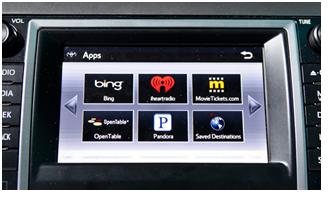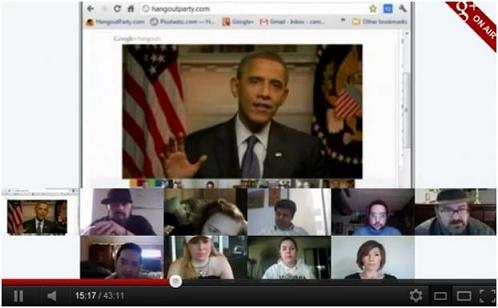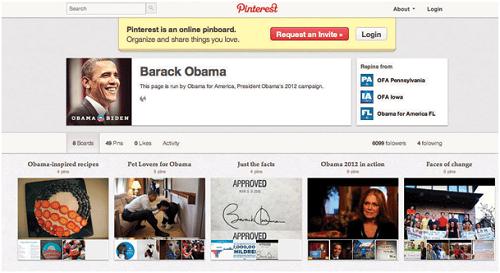With thousands of broadcasters running through casinos at the NAB, let me remind you that there is no formula for winning in roulette. But smart bettors realize that the more numbers you can cover, the better your chances of winning.
It’s a form of gambling ubiquity. You may not be able to control the spin of the wheel, but the more numbers where you have chips, the greater the likelihood that you’ll score.
That’s been Tim Westergren’s theory with the rise of Pandora. He may not know precisely which digital outlets will eventually win out, so he covers them all. Streaming, car dashboards, mobile phones, TV apps, and yes, even refrigerators – all of these are places where the almighty “P” can be accessed.
That’s what ubiquity is all about. Being as “everywhere” as possible. And there’s a CX experience element, too, because consumers are in a multitude of places that may not always be rationale. Pandora is committed to being wherever people wish to access their streams.
Westergen was recently quoted: “We want to make it even more ubiquitous.” Pandora’s creator is well aware that not all these outlets will emerge as popular. Some will even fail. But by covering his bets, Westergren is ensuring that he’s wherever consumers are.
 There are residual benefits, too. Sensing the growing popularity of Pandora, automakers, TV manufacturers, and other industries can’t use the “P” logo enough in their marketing efforts. By being ubiquitous, Westergren generates free buzz for a brand from everyone else.
There are residual benefits, too. Sensing the growing popularity of Pandora, automakers, TV manufacturers, and other industries can’t use the “P” logo enough in their marketing efforts. By being ubiquitous, Westergren generates free buzz for a brand from everyone else.
And that brings us to the political realities of 2012. It has been a brutal Republican campaign for many months now – and it may be far from over. We will then be treated to months of Obama versus whoever emerges victorious from the Republican camp.
We know that there will be records broken in terms of TV marketing dollars spent this year. But we also know that social media will play a role in the election outcome, too. Just as Obama forged new ground with his database and texting efforts in 2008, this election promises to be very social.
It is interesting that while all the candidates are trying hard to be present in this space, the Obama team continues to find a way to forge new ground, adapt to new outlets, and connect with fans and friends.
Earlier in the year, he was creating playlists on Spotify. Then he was doing Google+ Hangouts, connecting small groups of citizens together for video chats in a format that any radio personality or rock star could put together.
Now he’s on Pinterest – and he has created boards that are light, airy, pet-friendly, and female-oriented, which is who this site appeals to (at least for now).
Pinterest is coming on strong, and later this month, we’ll be releasing format appeal information from our Techsurvey 8 that will provide important feedback for stations who are weighing whether to start pinning or not.
The Obama team has their own research, and continues to conclude that even emerging sites have value. Unlike those expensive TV spots, Pinterest, Twitter, Facebook, and other social platforms are free. They only require a time commitment.
He only has 12,000 followers on Pinterest, but in what could obviously be a tight contest in November, every vote counts – especially female votes.
So if you think I’m all gaga over Obama, watch this clip from Jon Stewart that Lori Lewis dug up. He’s not batting 1,000 with social media and building voter relationships (but none of us are).
>EMAIL RECIPIENTS: CLICK HERE TO WATCH THE DAILY SHOW “SPAMALOT” VIDEO<
The Obama campaign may have to redefine its database marketing techniques and social strategy because Stewart is right – there are too many emails and texts, and there are some annoying messaging problems.
But they’re out there, slugging away, rather than sitting on the sidelines, waiting to see if a platform becomes established enough to be worthy of their time. And that speaks to some of those Facebook tenets that Mark Zuckerberg spelled out a few months ago.
“Be bold” is one of the guiding principles behind Facebook. “The Hacker Way” means that not every project will bear fruit or even see the light of day. But in this digital media world, you get credit for being present, for making an attempt, for reaching out.
And unlike roulette, your chances of winning are better than average.
- Media And Technology In 2025: Believe It Or Not! - April 18, 2025
- In Radio, You Just Never Know - April 17, 2025
- The Secret To Making A Great Podcast (And Great Radio) - April 16, 2025






Spot on! The winner wins the people where they are! Only in a field of dreams can you build it and they will come.
Andy, absolutely. It’s not enough to crank great content. The audience is moving quickly – you have to be where they are. Thanks for commenting.
Fred –
Very nice piece. In the words of Brian Solis –
(https://www.briansolis.com/2012/04/10-trends-to-beat-digital-darwinism/)
“To reach the “connected consumer”, you must first walk in their footsteps, it takes research not guesswork. Why? Because while your traditional consumer relies on tangible media such as TV, radio, newspapers, direct mail, email, Google search or static websites, the “connected consumer” is reliant on the right information finding them in the right places”.
Brian also said – “Your job is to not embrace new technology with arms wide open, but instead understand it and learn which disruptive technologies separate you from existing and potential customers”.
That is why the info from Techsurvey 8 (shameless plug) will be so valuable in helping radio connect in the right place and the most relevant ways.
From your lips, Mike. I hope that Techsurvey8 provides the industry with that necessary info to better understand what radio listeners are doing when they’re not listening to the radio. With 12 distinct format groupings, it should provide direction and learning. And thanks for the shameless plug!
I’ve been saying since the early 80si that there’s an opportunity with a punk country format. The Ramones and Willie….
I’d be a P2. Thanks, Dan.